AMD Ryzen 7 8700G and Ryzen 5 8600G Review: Zen 4 APUs with RDNA3 Graphics
by Gavin Bonshor on January 29, 2024 9:00 AM EST- Posted in
- CPUs
- AMD
- APUs
- Phoenix
- 4nm
- Zen 4
- RDNA3
- AM5
- Ryzen 8000G
- Ryzen 7 8700G
- Ryzen 5 8600G
CPU Benchmark Performance: Science And Simulation
Our Science section covers all the tests that typically resemble more scientific-based workloads and instruction sets. Simulation and Science have a lot of overlap in the benchmarking world. The benchmarks that fall under Science have a distinct use for the data they output – in our Simulation section, these act more like synthetics but, at some level, are still trying to simulate a given environment.
In the encrypt/decrypt scenario, how data is transferred and by what mechanism is pertinent to on-the-fly encryption of sensitive data - a process by which more modern devices are leaning to for software security.
Adding to our 2024 CPU suite, we've included the Montage Astronomical Image Mosaic Engine (MAIM) benchmark and OpenFOAM 1.2 and retained our gaming simulation benchmarks, including our Dwarf Fortress and Factorio benchmarks.
We are using DDR5-5200 memory as per the JEDEC specifications on the Ryzen 7 8700G and Ryzen 5 8600G, as well as DDR4-3200 on the Ryzen 7 5700G and Ryzen 5 5600G. The same methodology is also used for the AMD Ryzen 7000 series and Intel's 14th, 13th, and 12th Gen processors. Below are the settings we have used for each platform:
- DDR5-5200 CL44 - Ryzen 8000G
- DDR4-3200 CL22 - Ryzen 5000G
- DDR5-5600B CL46 - Intel 14th & 13th Gen
- DDR5-5200 CL44 - Ryzen 7000
- DDR5-4800 (B) CL40 - Intel 12th Gen

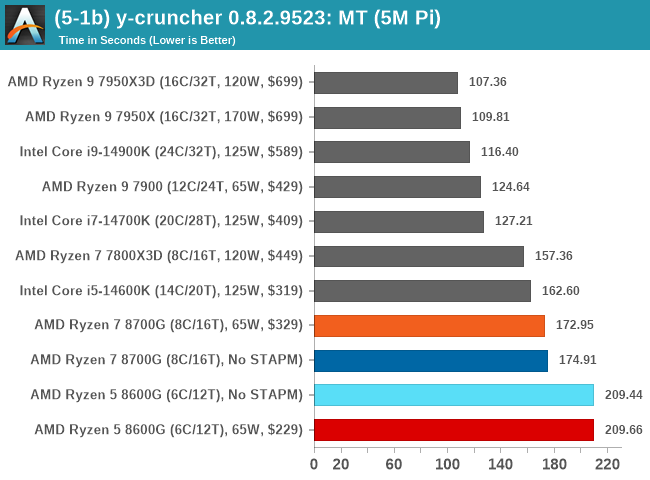
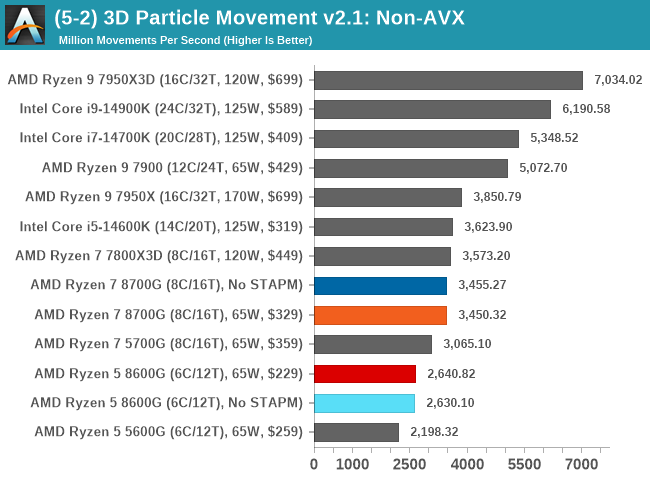


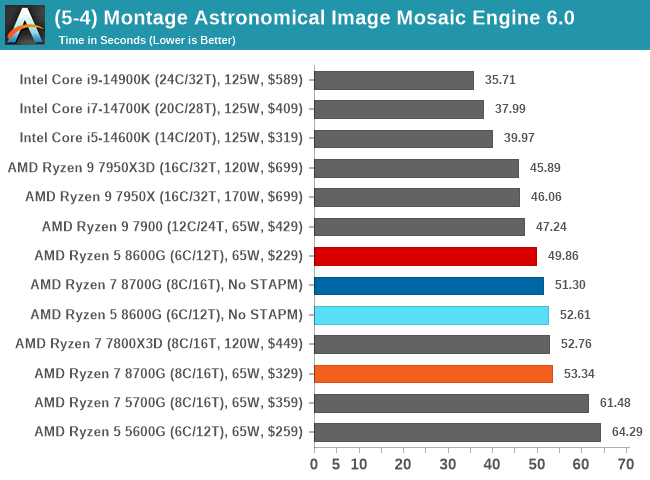
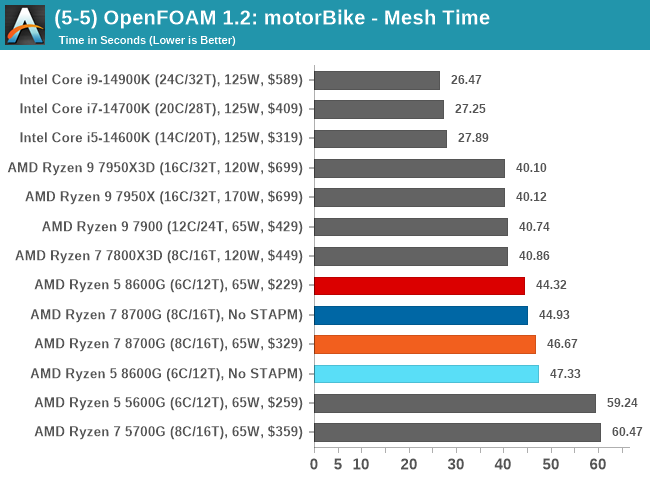
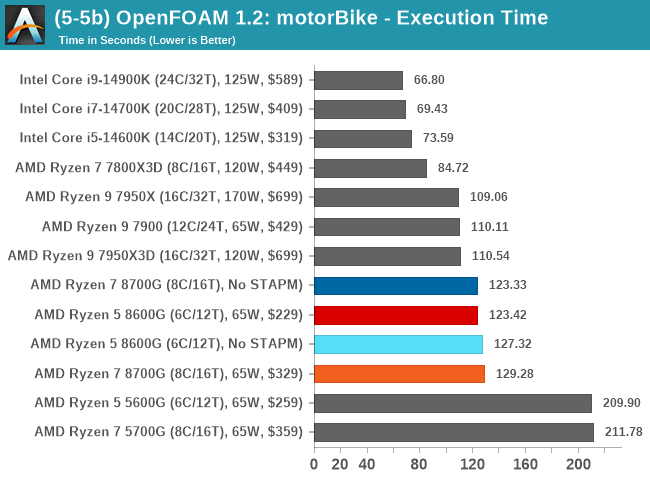

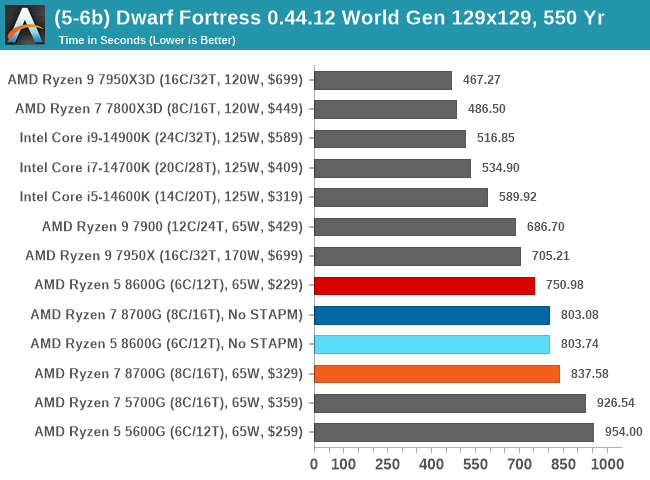
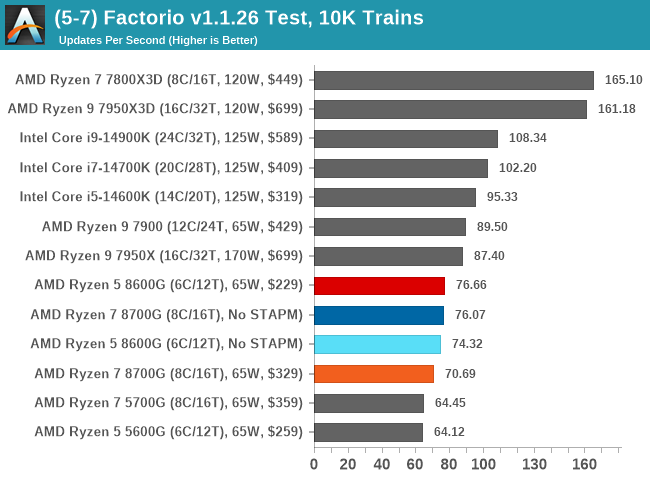
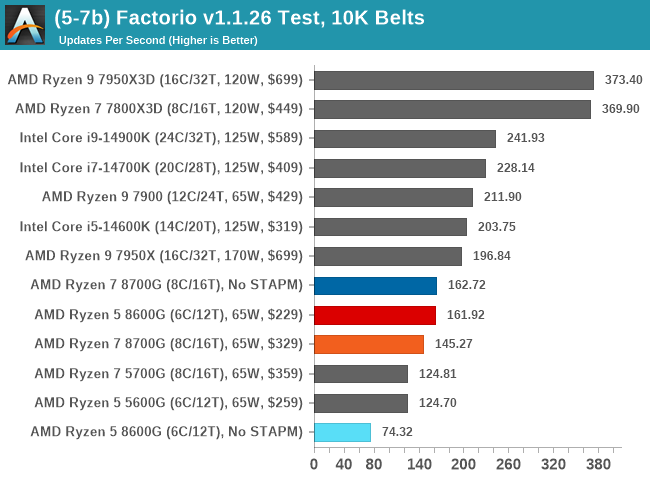
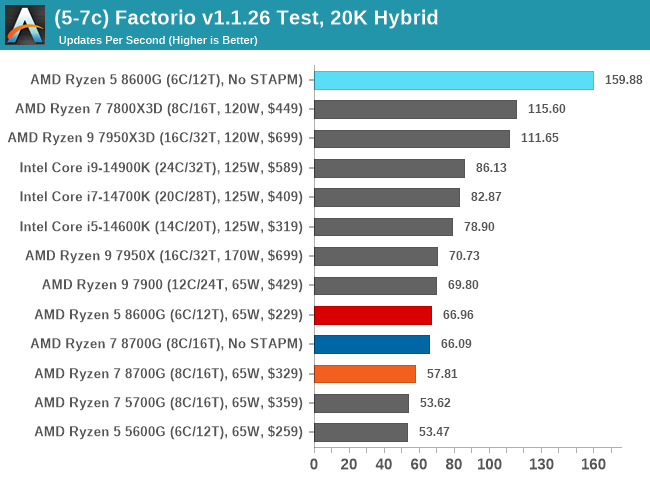
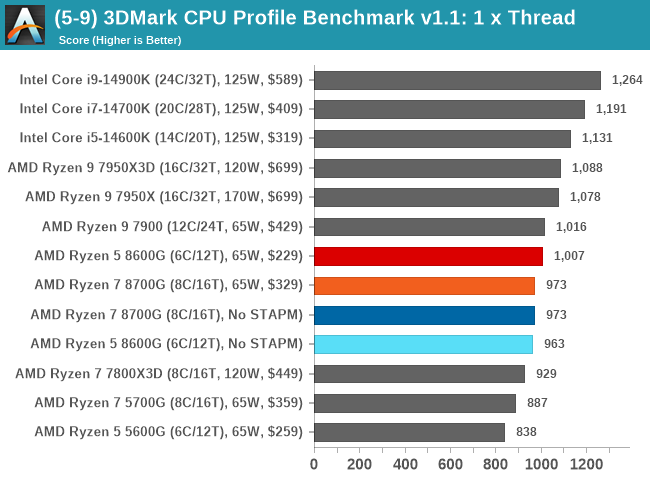
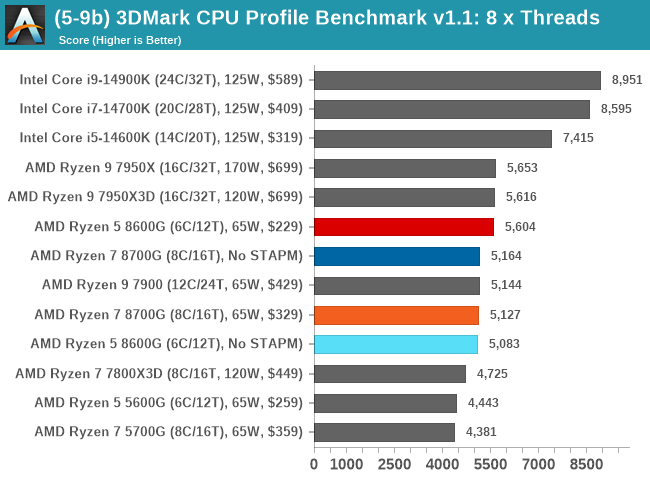
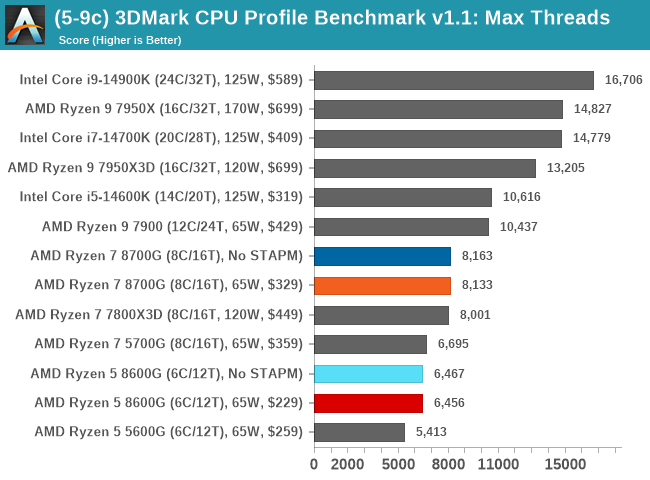
In our simulated and science-focused tests, much of the same happens here as we saw in encoding and rendering; bigger cores and more of them make the difference. We did see strong AVX performance, which is a given since Zen 4 supports AVX-512 workloads via two 256-bit channels. We also saw solid performance in y-Cruncher, with the Ryzen 5 8600G beating out the Ryzen 9 7900 in single-threaded performance. This shows that despite using more power-efficient Phoenix dies, Zen 4 on mobile still offers solid single-threaded performance when transitioned over to the desktop.
Testing without STAPM limitations in our Science and Simulation benchmarks and removing the sustained power management limits didn't really make much difference in performance in these tests.










111 Comments
View All Comments
TheinsanegamerN - Tuesday, January 30, 2024 - link
guys WHY would you use a CPU only test in a CPU REVIEW??!?!?!?t.s - Tuesday, January 30, 2024 - link
Cause it have best iGPU in its class. If you won't test that, why bother testing, as it's almost certain that 7700x or 7700 will be better.AndrewJacksonZA - Tuesday, January 30, 2024 - link
👍TheinsanegamerN - Wednesday, January 31, 2024 - link
Ok, and in the CPU bench section they use a CPU test. How would you know if a 7700 would be better in CPU load if you dont test it?AndrewJacksonZA - Tuesday, January 30, 2024 - link
guys WHY would you only test PART of a CPU in a CPU REVIEW??!?!?!?TheinsanegamerN - Wednesday, January 31, 2024 - link
How DARE we want to see what a CPU does in a CPU review. WAAAH I NEED IGPU OR ILL CRY WAAAAHFWhitTrampoline - Tuesday, January 30, 2024 - link
Because AMD does not support ROCm/HIP for its iGPUs and its ROCm/HIP for consumer dGPUs is lacking as well on Linux. And the Blender Foundation starting with Blender 3.0/Later editions has dropped supporting OpenCL as the GPU compute API. And so since Blender 3.0/later the Blender Foundation only supports Nvidia's CUDA for non Apple PCs/Laptops and Apple's Metal for Apple silicon for Blender 3D 3.0/later editions.So without any Ryzen iGPU support for ROCm/HIP there's nothing to take the CUDA Intermediate Language Representation(ILR) and convert that to a form that can be executed on Radeon iGPU/dGPU hardware. And for Intel's iGPUs and dGPUs it's Intel's OneAPI/Level-0 that does the translating of the CUDA ILR to a form than can be executed on Intel's iGPU/dGPU hardware and for Intel that OneAPI/Level-0 works for Windows and Linux!
Blender 3D generates CUDA PTX ILR and All GPU Makers us Intermediate Languages for GPUs so GPU makers/others ship no pre-compiled binaries where software gets directly compiled into the GPUs Native Instruction Set in advance. And that's so the ILR code remains portable across OS/Ecosystems and GPU makers are free to modify their GPU ISA and still maintain comparability with software that only gets compiled into a portable Intermediate language Representation(ILR)
FWhitTrampoline - Tuesday, January 30, 2024 - link
Edit: maintain comparabilityto: maintain compatibility
I hate Firefox's Spell Checker its a Train Wreck as always!
thestryker - Monday, January 29, 2024 - link
Feels like these APUs deserve a DRAM scaling article comparing the IGP performance.GeoffreyA - Tuesday, January 30, 2024 - link
Yes, that would be a nice one. Always necessary for APUs.